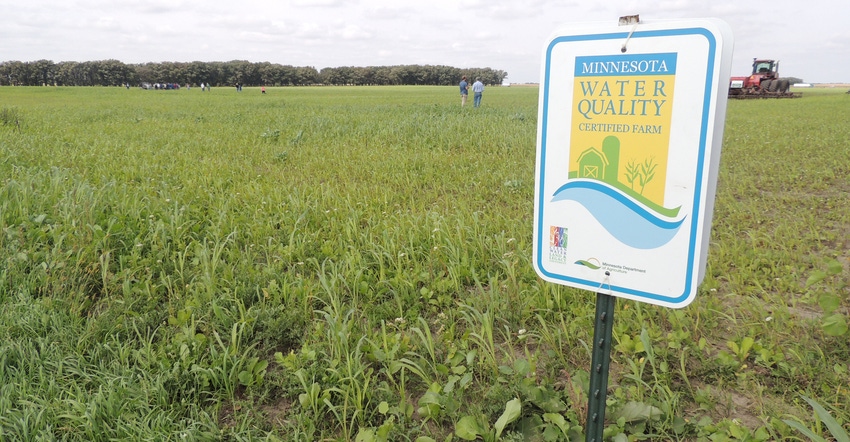
Farmers who voluntarily participate in the Minnesota Ag Water Quality Certification Program showed higher profitability in 2020 when compared to non-certified farms, according to a recent study by the Minnesota State Agricultural Centers of Excellence.
This is the second year that Minnesota State Farm Business Management data have noted improved financial outcomes for certified farms.
The “Influence of Intensified Environmental Practices on Farm Profitability” study examined financial and crop production information from farmers enrolled in the farm business management education program. The 64 MAWQCP farms in the study saw 2020 profits average $212,892 in 2020, $40,000 higher than noncertified farms at $172,687. Median net farm income was also slightly higher at $111,406, compared to $100,684 for the average.
The 2019 data showed an average of $19,000, or 20% higher profits for certified producers. Other key financial metrics are also better for those enrolled in the MAWQCP, such as debt-to-asset ratios and operating expense ratios, according to the report.
Of the 64 certified farms in the farm management system survey, most produce crops only (41%); 25% are livestock, 14% are crop and livestock, and 20% report as “other.”
The two years of data serve as an early indicator of a positive return on investment for whole-farm conservation management.
“While this study is in its infancy, capturing two years of data and 3% of the Minnesota database, it does look encouraging that producers who are water quality-certified enjoy an increase in farm profitability,” says Keith Olander, executive director of AgCentric, a Minnesota State Agricultural Center of Excellence. “As we expand this dataset in future years, we will look to incorporate enterprise-level management data that may explain more about what is driving these profit levels.”
To view, download, or request a copy of the report, visit agcentric.org.
MAWQCP history
MAWQCP is voluntary for farmers and landowners interested in implementing specific conservation practices to protect the state’s water resources. Each certified farm operates with a unique plan designed for its location and enterprise.
Announced in January 2012, MAWQCP first rolled out as a pilot program and was the first of its kind in the U.S., created with a Memorandum of Understanding among the Minnesota Department of Agriculture, the Minnesota Pollution Control Agency, the Minnesota Board of Water and Soil Resources, the Minnesota Department of Natural Resources, USDA Natural Resources Conservation Service and the EPA.
Its goal? To accelerate voluntary adoption of agricultural practices that protect and maintain water quality.
Farmers who implement and maintain approved conservation plans receive certification for their efforts. With certification in hand, the program guarantees that farmers will not be subject to new state water quality regulations for 10 years.
The pilot focused implementation in four watersheds: Elm Creek in Cottonwood, Faribault, Jackson, Martin and Watonwan counties; the Middle Sauk River in Stearns County; Whiskey Creek in Otter Tail and Wilkin counties; and the Whitewater River in Olmsted, Wabasha and Winona counties. After the pilot period, the program was launched in seven regions across the state, each with a full-time area specialist employed and placed within the soil and water conservation district (SWCD) regional structure. MDA provides funding for staff as well as additional technical assistance and financial assistance funding for conducting certifications throughout all counties in the regions.
Since the program’s statewide launch in 2016, 1,038 farms totaling more than 734,000 acres have been certified across Minnesota. MDA notes that certified farms have added 2,095 new conservation practices under the program. Those new practices help to reduce greenhouse gas emissions by more than 40,500 metric tons each year. That annual saving is equal to 4.5 million gallons of gasoline, or 44.6 million pounds of coal, or eliminating more than 100 million miles driven by an average passenger vehicle.
MDA officials note the program is on target to meet Gov. Tim Walz’s goal of enrolling 1 million acres by the end of 2022.
Farmers and landowners interested in becoming water quality-certified may contact their local SWCD or visit mylandmylegacy.com. Interested parties may also learn more about the Minnesota State Agricultural Centers of Excellence.
About the Author(s)
You May Also Like






